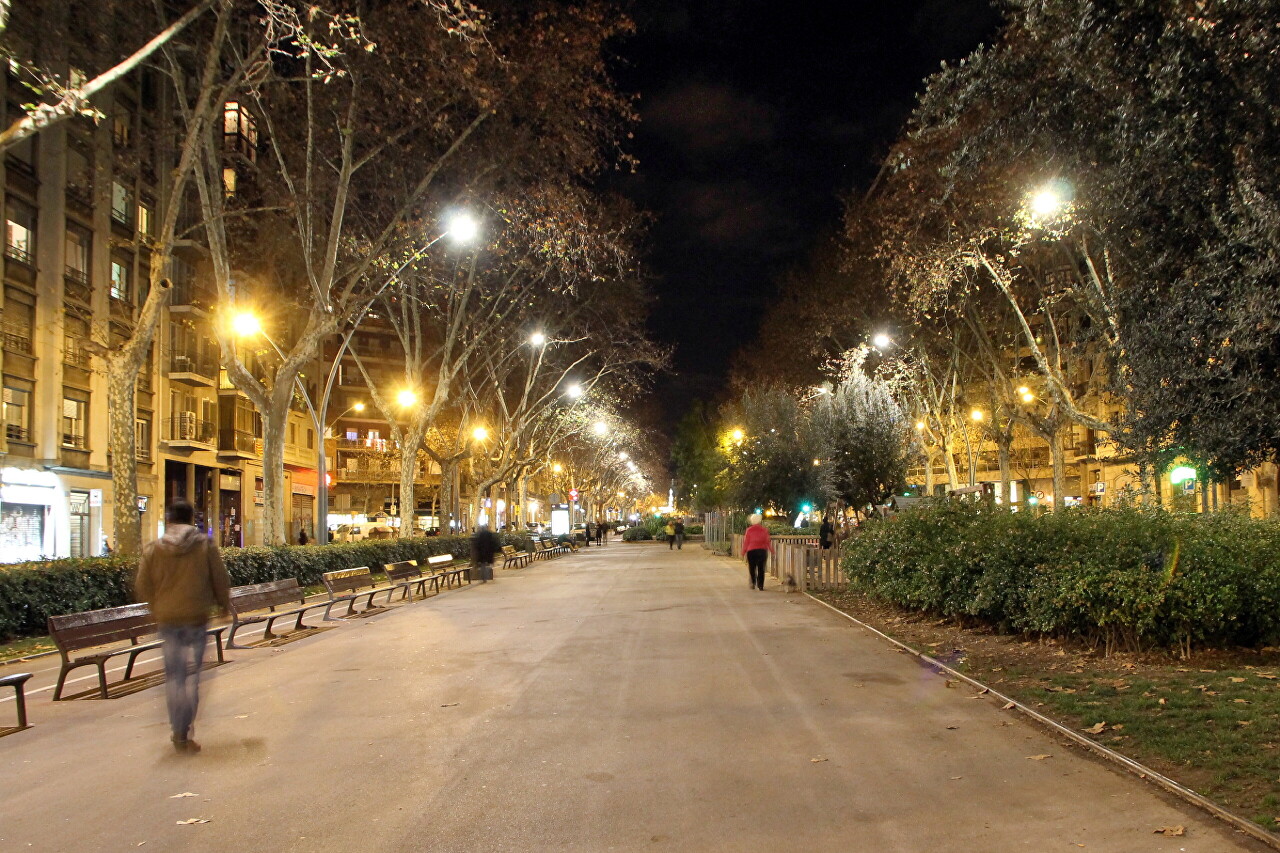New Year's Evening Walk in Eixample
After the trip to Montserrat, we had a little energy left for a walk around the evening city. On the first day of the New Year, the streets are deserted, there are no cars, no pedestrians.
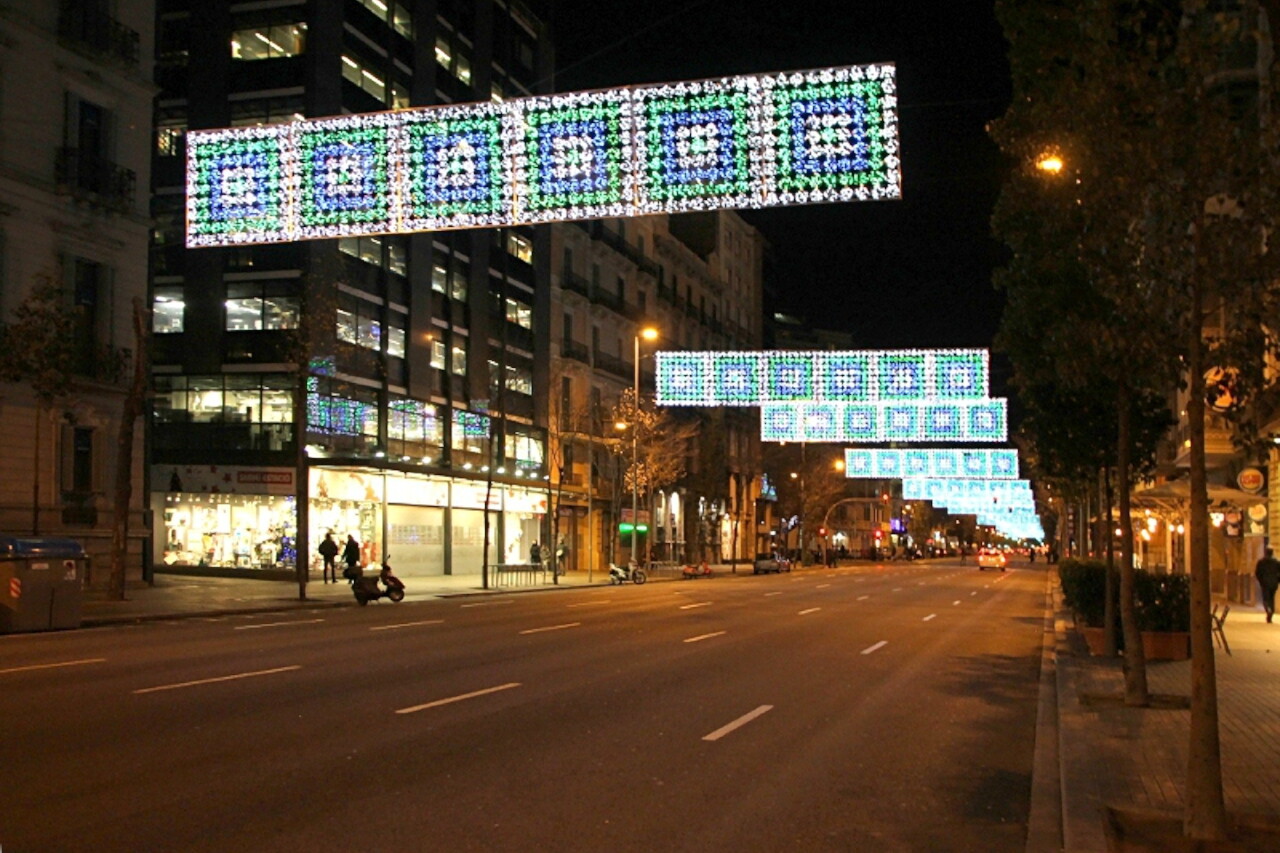
The goal of the walk was the Gaudi houses located in the Eixample district. After a short walk, we find the first object - Casa Batlló, located on Passeig de Gràcia, three blocks from Gran Vina.
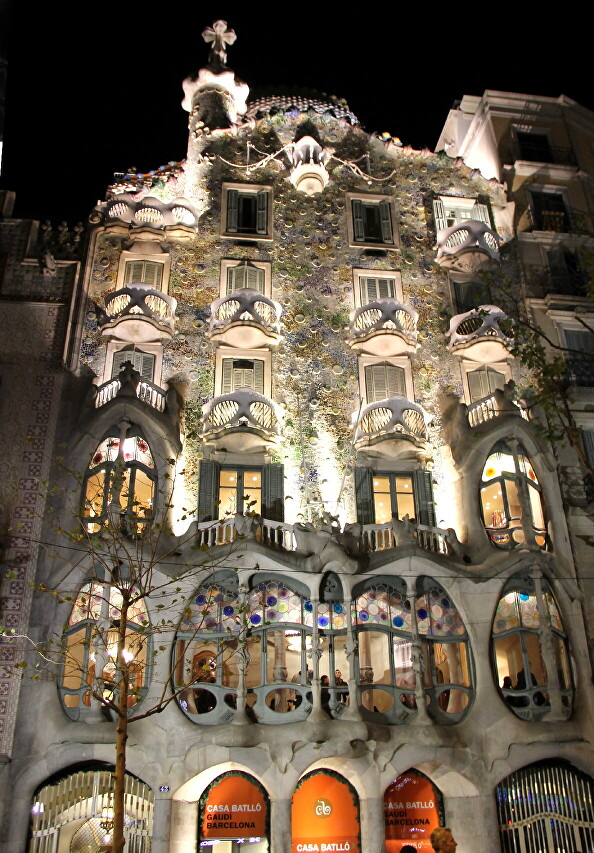
After walking another block, we will see the fashionable Majestic Hotel, opened in 1918.
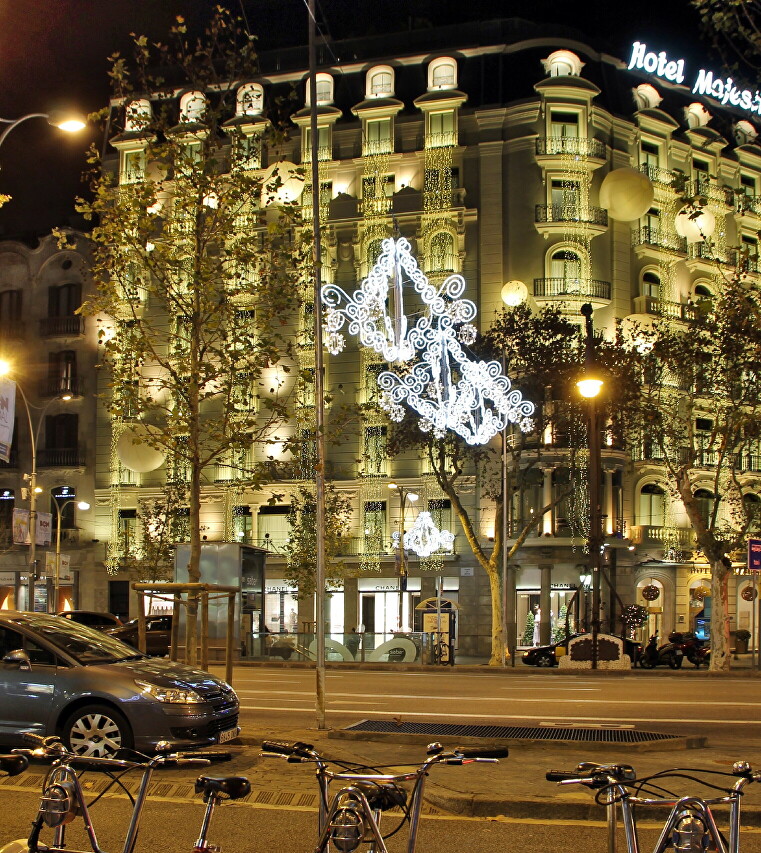
Two blocks down the same boulevard is another of Gaudi's works, Casa Mila.
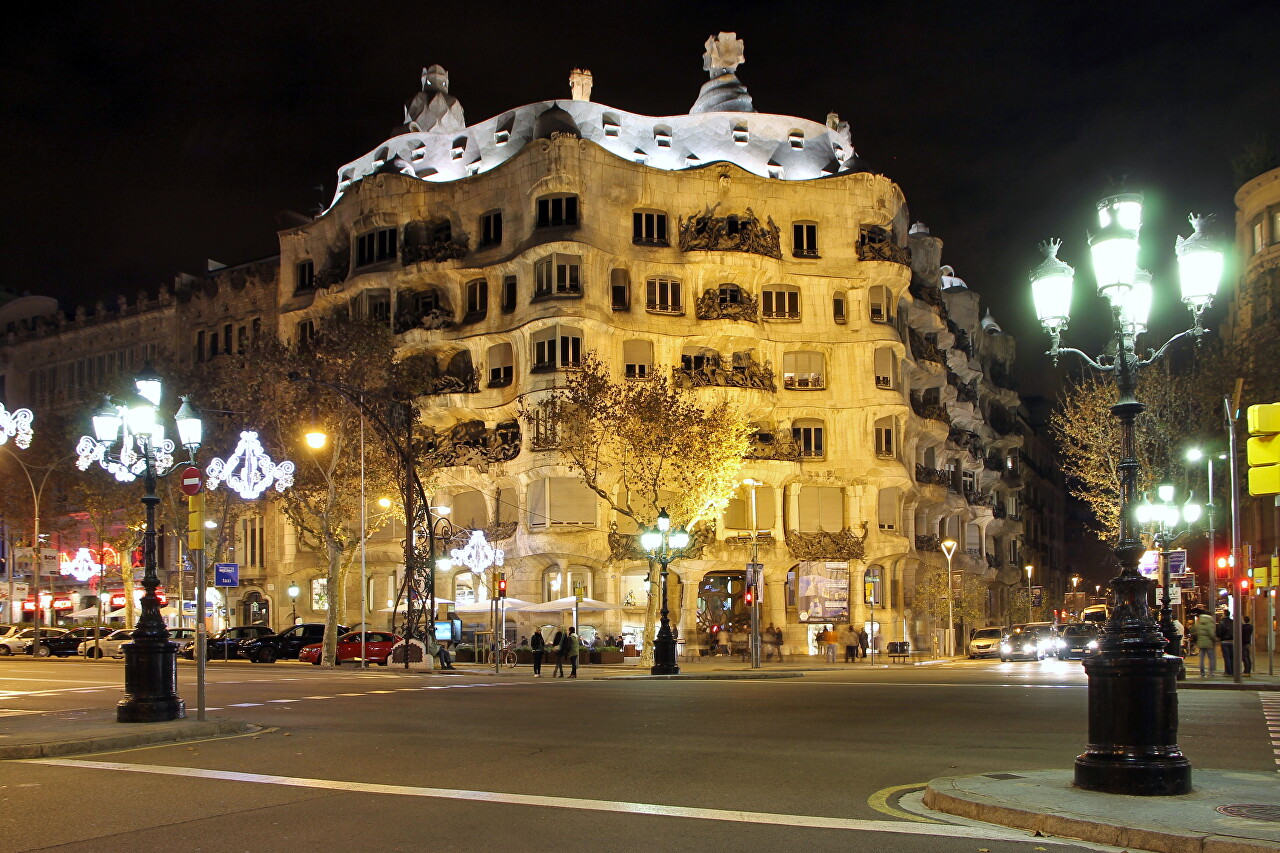
Barcelona residents often refer to the building as La Pedrera (quarry).
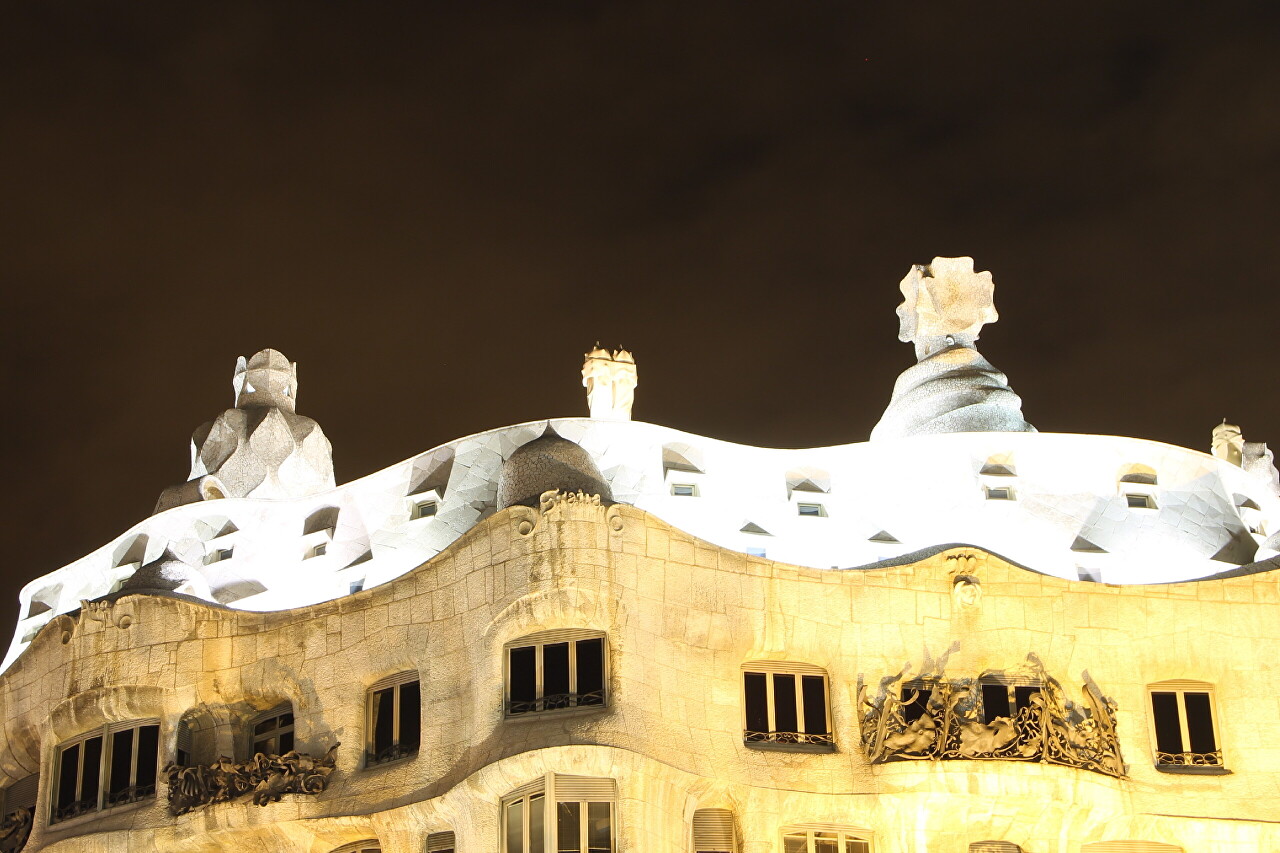
After reaching Diagonal Avenue, turn right, towards the Sagrada Familia Cathedral.
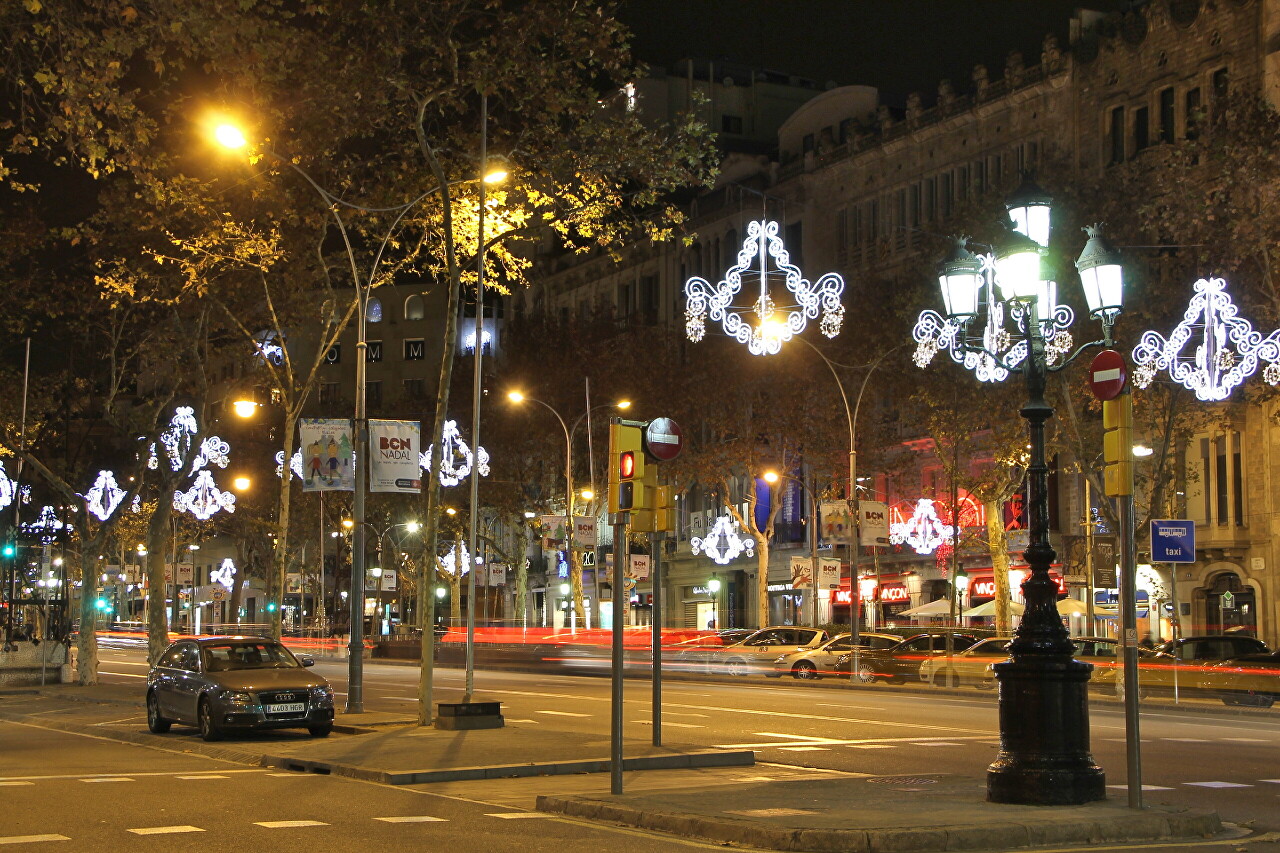
There are several water sources decorated with sculptures. One of them was opened in 1913 and named Fuente de la Palangana (Fountain with basin), by Eduard B. Alentorn. The plot of the sculpture is taken from the life of Alentorn himself. He had an adopted son, a black boy, and his daughter did not believe that this was a natural skin color, and, wanting to find out the real one, tried to wash it off. Barcelona residents call this fountain Negrito.
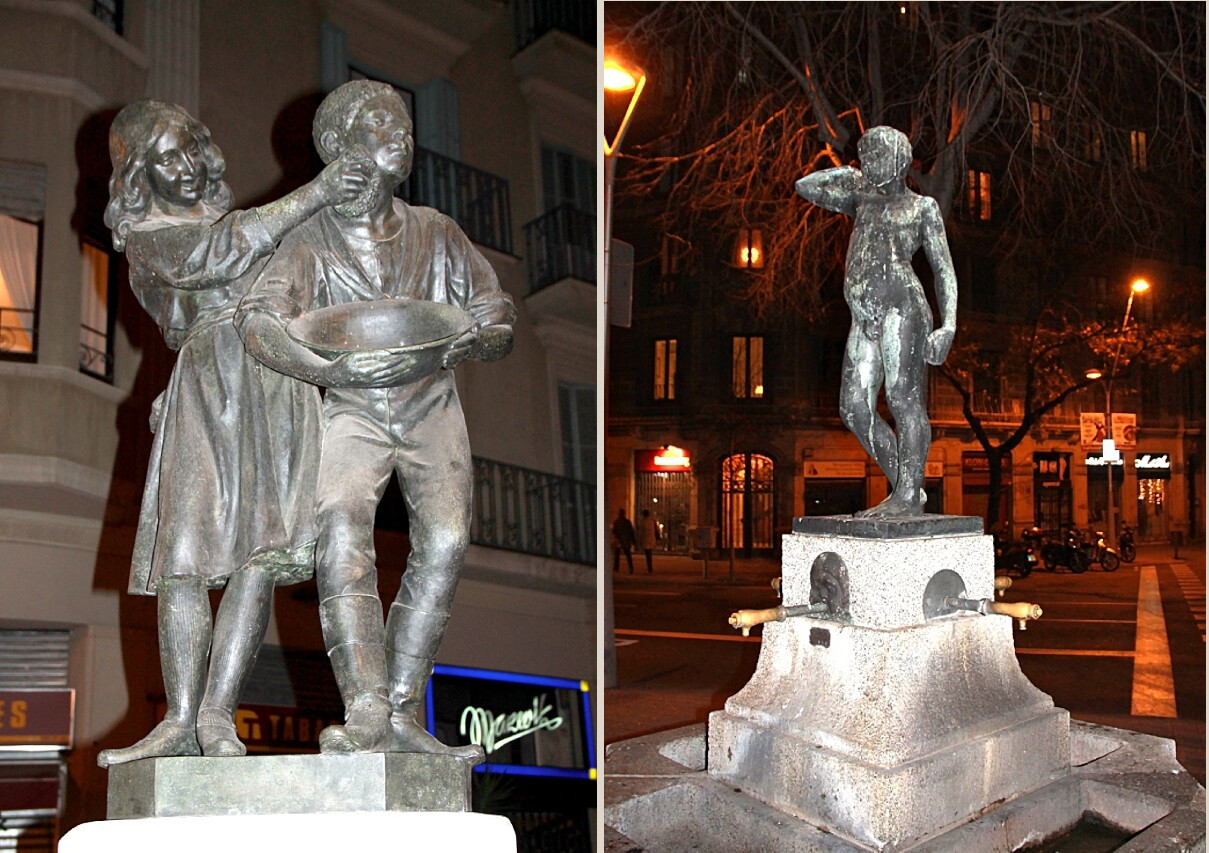
On one of the houses, two huge eyes of the "Ruhr Owl" (Mussol dels Roura), an advertising sign of the company Rótulos Roura, installed in 1970, burn brightly. When Barcelona City authorities began cleaning up old billboards in 2004, the public took up the challenge. The Municipal Improvement Commission recognized the owl as an element of a comfortable urban environment and left it on the roof of the building-iron on Werdauger Square. In 2011, LED lamps were installed in the owl's eyes. Founded in 1930, Rótulos Roura specializes in corporate identity development and visual advertising. In the seventies, the firm's office was four blocks away. She is now named Roura & Cevasa and its head office are located in Madrid. In the photo on the right is a monument to Justint Verdaguer, a Catalan poet of the late 19th century.
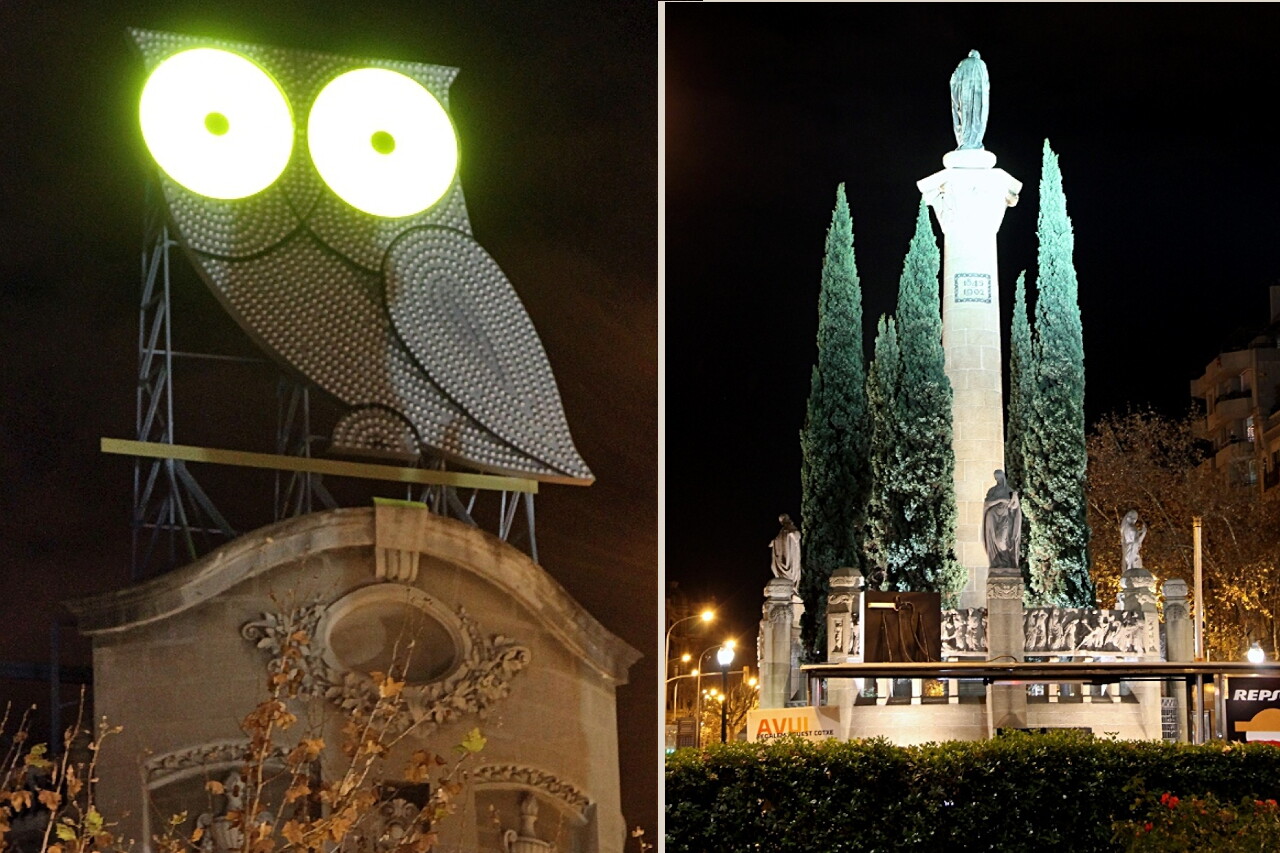
Three blocks from the Sagrada Familia Cathedral, the Avenida Diagonal crosses the wide San Juan Boulevard.
